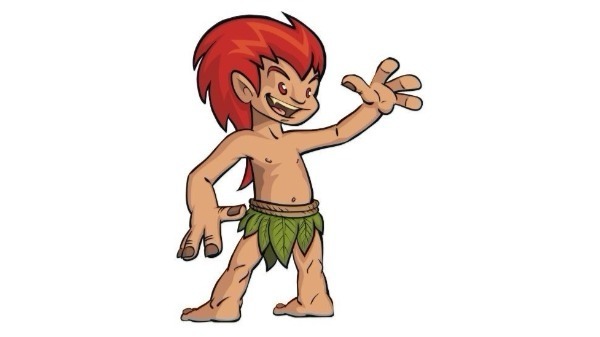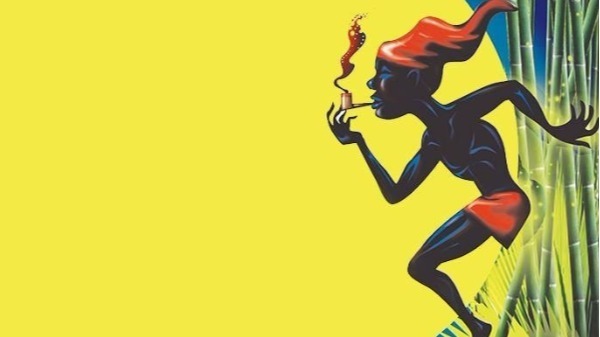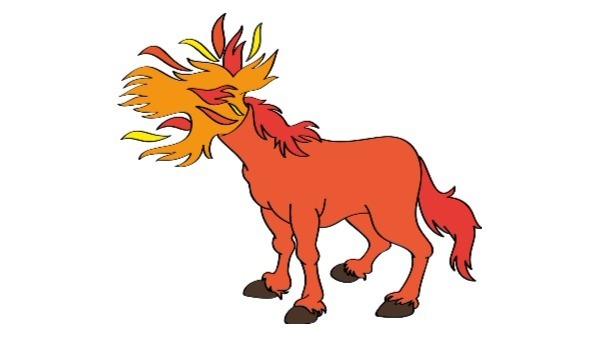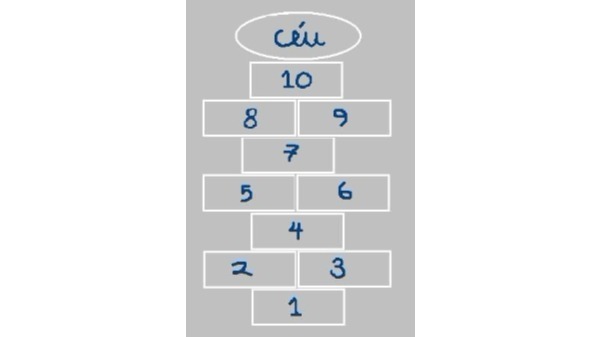Brazilian folklore is a combination of legends, tales, myths and stories about fantastic creatures and beings that inhabit the imagination of traditional peoples from different regions of the country.
The folklore of Brazil is formed based on the mix of typical traditions from the various cultures that form the nation's identity, with emphasis on Portuguese, indigenous and African.
In addition to the stories, customs and legends of characters created from the popular culture of these peoples, Brazilian folklore is also composed of parties, games, beliefs, typical foods and other customs that were transmitted orally between the different generations.
Due to the cultural diversity of the country, Brazil has a very rich folklore. However, it was only after the 19th century that it began to gain importance and prominence by authors and intellectuals.
Brazil celebrates Folklore Day in August 22, a date that is usually celebrated mainly in schools across the country.
Main Legends of Brazilian Folklore
Legends mix real and historical events with fantasy characters and elements and always try to explain mysterious or supernatural facts.
The folkloric imagery of Brazil is filled with different fantastic characters. As a matter of fact, each region of the country assumes a typical story of a certain Folklore character. Check out some of the most popular:
legend of Curupira

Protector of forests, wild plants and animals.
This is among the most popular legends in the country. According to the myth, Curupira ("forest demon") is a supernatural entity that inhabits the forests, assuming responsibility for protecting the fauna and flora from the attack of hunters.
For the indigenous people of the northern region of the country, the Curupira is known as Caipora or Caiçara. This creature is characterized by having a body covered in red hair, green teeth, and feet turned backwards.
Incidentally, this last quirk is used to deceive people who try to follow him. They end up getting confused when looking at the footprints that indicate the path contrary to the one that Curupira actually followed.
The legend also says that Curupira has the appearance of a boy and that he is always mounted on a wild boar. As a character who lives in forests, it is common for his popularity to be stronger in the Amazon region.
Learn more about Curupira.
Legend of the pink dolphin

He makes women pregnant and disappears.
Another legend of indigenous origin and quite popular in the northern region of the country (Amazon). The dolphin (a species of river dolphin) would be a magical animal that, during the June festivities, becomes a very handsome, conquering and communicative man.
The main characteristics of the Boto are the fact that he is fully dressed in white and with a big hat, which he wears to hide a hole in its head (which is nothing more than the animal's nostrils that didn't disappear after its metamorphosis into being human).
Boto chooses the prettiest girl at the party, seduces her and then takes her to the bottom of the river, where he makes her pregnant. Therefore, the legend says that when the woman becomes pregnant mysteriously, it is the Boto's fault.
This story is very common to try to justify pregnancy out of wedlock, especially in riverside communities in the Amazon region.
Legend of Saci-Pererê

Loves mischief. Protector of forests, especially medicinal herbs.
This is another popular myth across the country. The legend of Saci-Pererê tells about a black girl who wears a red cap, smokes a pipe, walks on one leg and loves to play tricks.
Unlike other legends, the history of Saci would have originated in indigenous groups in the southern region of Brazil. However, with the myth's popularity, there are versions of the legend in every region of the country.
Saci lives in the forests and loves to play pranks to scare people who enter his habitat without his permission.
Also read about the Afro-Brazilian culture.
legend of cuca

Alligator-headed old witch who eats naughty children.
Cuca is described as an old-looking witch with an alligator head and large claws.
Legend has it that Cuca inhabits the forests and likes to kidnap disobedient children. Whoever is caught by Cuca is used as an ingredient for the evil creature's meals.
This is another very popular character across the country. The writer Monteiro Lobato (1882 - 1948) was one of the main responsible for spreading the legend of Cuca throughout Brazil, through the stories of the work Yellow Woodpecker Site.
Legend of the Headless Mule

A woman who doesn't keep her virginity for her husband turns into a headless mule.
This supernatural creature is described as a mule that sets off fire where its head should be.
This legend has a very strong moral and sexist stamp, as it represents the punishment for breaking women's chastity. Any woman who falls in love with a priest (priest) would be turned into a headless mule.
Other versions say that a woman who has sex with a man (especially a boyfriend) before marriage will be bewitched and will turn into a headless mule.
The origin of this legend is uncertain, but its popularity in Brazil is evident. Also according to popular history, the headless mule runs through fields and forests, making very loud neighs, scaring people and animals wherever it goes.
Legend of Iara (Mother of Water)

Seductive mermaid that lures men to drown in the river.
Another legend from the Amazon region. THE Water Mother she is described as a kind of mermaid (a woman's body and a fish) that inhabits the rivers of the Amazon.
According to legend, Iara has beautiful black hair and sits on the riverbank singing mesmerizing melodies that attract men in the region. After seducing them, Iara takes her victims to the depths of the river, drowning them. Some versions of the legend even say that Iara devours its victims after drowning.
Anyone capable of escaping the charms of Mãe D'água, according to legend, would go mad. And the only way to restore sanity to the person would be through the help of a shaman.
Find out more about the main Brazilian Folklore Characters.
Typical Brazilian Folklore Games
They are popular and traditional games or games, passed down from generation to generation. In addition to serving as a distraction for children (and adults), folk play is also commonly used as a learning methodology. Check out some of the best known:
Flying kites
Also known as "flying a kite" or "releasing a tail", a kite is an object made from sticks and cedar paper (or plastic, in some cases).
The objective is to make the kite take off and control the object in the sky, performing various fun stunts, which are controlled through a line.
tag
This game needs at least two participants. There are many variants of the game, but the best known is the following:
- Choose a person to be the "catcher".
- The other participants must run and avoid being touched by the "catcher".
- Whoever is caught automatically becomes the "catcher", having to touch someone else to convey their function.
Another version says that each person caught by the "catcher" must leave the game. The last participant left in the game is the winner.
Hide and seek
Another group game. People should choose one to look for while the others hide:
- The person chosen to search must have their eyes closed or blindfolded.
- The other participants must hide.
- When he finishes counting, the person who is going to look for it must shout: "whoever hid, hid. Who didn't hide, here I go!"
- When you find someone, the person must run and hit the place where the game started (where it counted).
- If the person who was hiding touches the starting place of the game first, then he wins and the "seeker" must start the search again.
This is just one version of the game, as there are many different ways to play hide and seek.
Yellow cow
It's a group game. Before starting, participants should recite the following poem: "yellow cow jumped out the window, whoever speaks eats her poop".
From that moment on, everyone must be silent, without making any kind of sound. Each participant can try to provoke others, to make them laugh, for example. The first to speak loses the game.
Blind goat or Blind snake
One participant is blindfolded and must try to look for others with their eyes closed. The first person who is touched by the "blind goat" must assume this position, changing places with the person who was blindfolded.
Hopscotch
To play hopscotch you need to draw a picture on the floor (usually using chalk). The figure must have ten squares, interspersed between one and two (see the image below):

- Each player must throw a stone into the square in sequence. That is, it starts shooting at 1, then at 2, 3, 4 and so on.
- The participant cannot step on the square where the stone is. That is, if the stone is in square 4, the person must jump from number 3 to 5.
- A very important detail: only one foot must step inside each square. If you step outside the square or with two feet in a single number, the person "burns the hopscotch" and must start from the beginning.
- Whoever managed to hit "Heaven" first wins.
Oven mouth
In this game there are two roles: the master and the subjects. Before starting, participants should recite a short poem.
- Master says: "Oven mouth"
- Subjects say: "Oven"
- Teacher: "Rosewood"
- Subjects: "From the"
- Teacher: "Are you going to do whatever the master tells you?"
- Subjects: "Let's go"
- Teacher: "What if you don't?"
- Subjects: "Take cake"
From there, the master begins to challenge the other participants to fulfill a series of tasks. The first to complete the master's order wins and the others are slapped on their hands (the so-called "cake").
Learn more about recreational games.
Main Brazilian Folklore Festivals
Some of the myths and legends of Brazilian folklore gave rise to the traditional popular festivals that are held in different regions of the country.
June celebration
June festivals are a tradition of Portuguese origin and very common in the Northeast region of Brazil. They are held in commemoration of the three main saints in the June court: Santo Antônio (June 13), São João (June 24) and São Pedro (June 29).
See also the meaning of julina party.
Kings' Folia
The Folia de Reis is a festival also of Portuguese origin that arrived in Brazil during the colonization period. This celebration commemorates the visit of the three wise men to the baby Jesus after his birth, according to biblical accounts.
Carnival
The carnival had its origins in Egypt, with the objective of celebrating the success of the harvests. After being taken to Europe, he arrived in Brazil through the Portuguese.
Carnival parties in Brazil are held throughout the country, but the most traditional are in some cities in the Northeast, such as Recife, Olinda and Salvador, in addition to the traditional Samba School parades that take place in the cities of Rio de Janeiro and São Paul.
Learn more about Carnival.
Bumba-Meu-Boi
the party of Boi-Bumba takes place annually during the months of June and July. The festivity has been one of the most important in the state of Maranhão since the 18th century.
However, in the city of Parintins, in the state of Amazonas, Boi-Bumbá is also very prominent. A big party takes place annually in the city since 1965, where the oxen compete Guaranteed and capricious.
As it is an extremely important folk festival, the day was decreed June 30th as the National Day of Bumba Meu Boi.
Círio of Our Lady of Nazareth
Considered one of the largest religious processions in the world, the Círio de Nossa Senhora de Nazaré always takes place on the second Sunday of October in Belém, capital of the state of Pará.
The Círio de Nazaré represents the devotion to Our Lady of Nazaré, which would have started in the 17th century by the Jesuits.
See also the meaning of Popular culture.
Dances and Rhythms of Brazilian Folklore
Brazilian folklore is very rich in rhythms that represent the culture of a certain region of the country, with its costumes and scenery representatives, everyday events, games and lots of entertainment in the songs that are usually performed in spaces public.
Some of the rhythms of Brazilian folklore are:
Samba de Roda
The samba de roda is a heritage from the slavery period in Brazil, originally performed in the worship of the orixás and caboclos, in the Recôncavo Baiano.
This musical genre came to be much appreciated in Rio de Janeiro and, thanks to great popular names in samba, fell into national taste. The cavaquinho, cuíca, tambourine, rattle, among other percussion instruments are fundamental to samba de roda.
Ciranda
Originally from the state of Pernambuco, this is a typical dance of the fishermen's women. According to tradition, they danced the ciranda while waiting for their husbands to return from the sea.
The cirandeiros form a large circle, dancing at a slow pace and setting the pace with strong footsteps on the ground. The dance can be simple (two steps back and two steps forward) or choreographed.
Maracatu
Originating in the state of Pernambuco, based on African culture, Maracatu is considered a musical rhythm, ritual and dance.
There are two types of Maracatu: Maracatu Nation and Rural Maracatu, the first being the oldest and most popular in Recife; the second one has as its main characteristic the lance cable as a central character of the demonstration.
Gang
In Brazil, the square dance is a typical folk dance of the June festivals. The style is inspired by traditional country parties, with the use of an elaborate language.
Danced in group, the square follows a traditional choreography, performed by pairs of dancers. There is still the presence of the narrator, who aims to liven up the dance by reciting popular verses and phrases.
Even though it is common throughout the country, gangs are usually more appreciated in the Northeast and North regions.
Frevo
It is a typical rhythm of the street and ballroom carnival in the city of Recife, Pernambuco. It has a fast tempo and individual choreography, marked by wind instruments that make up the fanfare.
Frevo is considered a mixture of several different styles of dance, such as the ballet and capoeira. The use of small umbrellas during the dance is another feature that characterizes frevo.
There are three different types of frevo: street frevo; frevo-song; and the block frevo.
Learn more about the meaning of Frevo.
Stamp
Originally from the Amazon region, Carimbó is a very popular dance style in the state of Pará. Its composition is the result of a mixture of cultural elements from the Amazonian indigenous peoples, the blacks and the Portuguese.
The dancers wear a typical costume (coloured fabrics, long and with floral prints) and dance in a circle. As they rotate and simulate a constant courtship between them, the dancers can clap, tap their feet or make other body movements (such as bending your body while pacing your step with one foot in front of the other).
Learn more about the meaning of Folklore.
